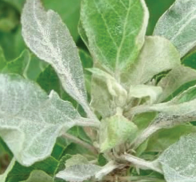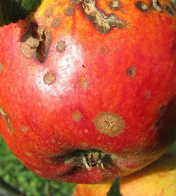Pest & Disease

Codling Moth
Codling moth ‘maggots in the apple’ affect apples, pears and quinces. In spring adults hatch from cocoons to lay their eggs on leaves and fruit. Caterpillars tunnel into the developing fruit and feed for several weeks, before pupating. A second generation can hatch during the summer.

Plum moth
Plum Moth can affect plums, damsons and gages. The Plum moth produces caterpillars that live and feed inside the developing fruits they can be up to 12mm long with a pale pink body and a brown head.

Woolly Aphid
The Woolly Aphid thankfully is easy to spot due to the tell-tale cotton wool like deposits it secretes. The “wool” camouflages and protects the aphids inside the wool. Often the wool is mistaken for a fungal issue.

Powdery Mildew
Powdery Mildew is a fungal disease affecting a wide range of plants. It can be recognised by the characteristic dusty, white coating on leaves and stems.

Canker
Cankers may be either bacterial or fungal. It is the fungal form that affects apples and pears. Fungal spores enter via pruning cuts, wounds or cracks in the bark. Canker can be very destructive if left untreated.

Apple Scab
Apple Scab is a fungal disease that can affect both apples and pears. The name comes from the dark “scabby” marks that can be seen on the fruits. However, the first signs will be on the leaves with dark spots developing on the leaf early in the growing season.

Aphids
Aphids, often referred to as simply black fly or green fly. There are hundreds of species of aphids. They are tiny winged sap-sucking insects that multiply at an incredible rate. Aphids can overwinter as eggs and sometimes adults.

Peach Leaf Curl
Peach Leaf Curl is a fungal disease affecting peaches, nectarines, almonds and apricots. The disease is carried in droplets of rain water carried on birds claws and therefore easily transmitted from tree to tree.
